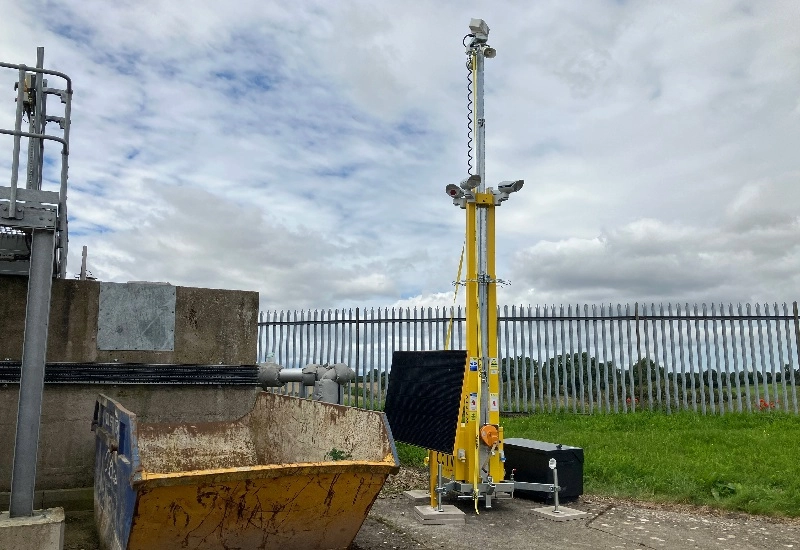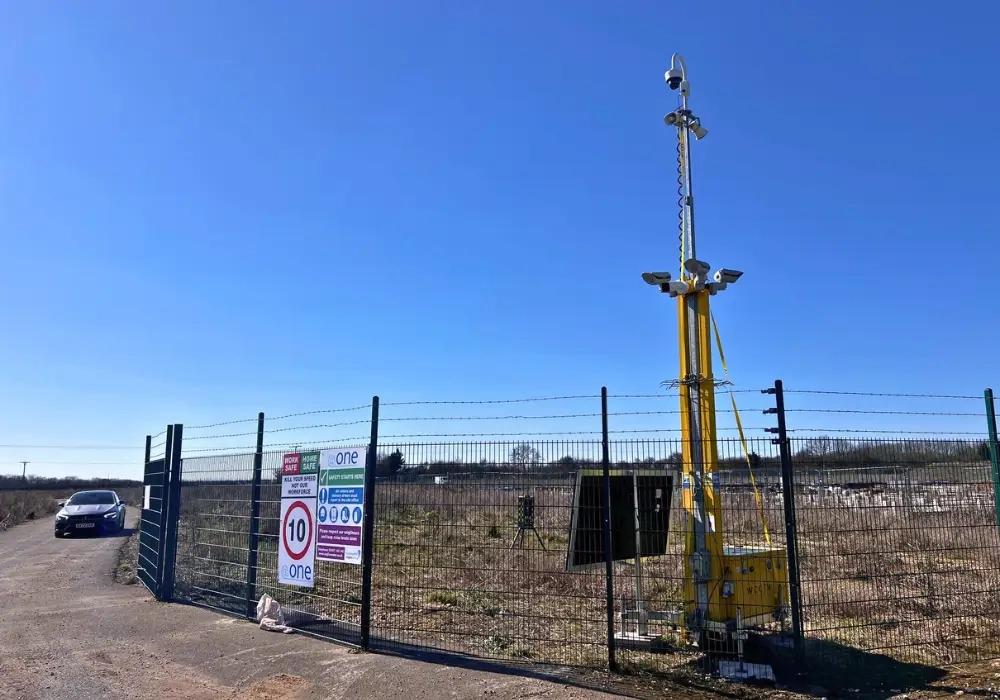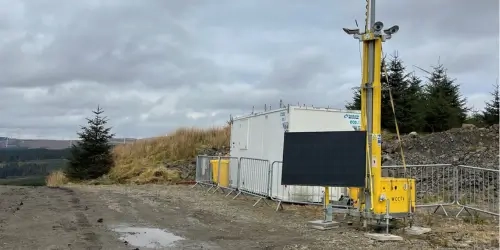In today’s construction industry, compliance teams face mounting challenges from regulators, boards and clients about demonstrating transparency and control.
Regulations covering health and safety (HSE), ESG reporting, GDPR and financial oversight are becoming increasingly complex, with firms left managing regulation changes on a regular basis.
However, even with no signs of slowing down with this fast-paced environment, many construction firms continue to use manual reporting processes and spreadsheets to manage compliance tasks.
Although manual processes and spreadsheets are low-cost, there lies a series of high costs, from time lost to manual data entry, the risk of human error, threat of financial penalties and inefficient audit trails.
We explore the real-world, hidden costs of manual reporting in construction, why spreadsheets are no longer fit for purpose and how compliance leaders can modernise their approach to protect both their organisation and careers.
The Hidden Costs Behind Manual Reporting
Spreadsheets and manual reporting appear low-cost in comparison to other options because there is no requirement for software investments and teams are used to them.
However, in a regulation-focused environment like construction, what appears simple often creates compliance pitfalls that are difficult to recover from.
Manual processes are time-consuming, pulling compliance managers and their teams away from strategic oversight, and leaving them in an endless cycle of data entry and reconciliation.
Whether it’s a duplicate entry, missed update or misplaced formula, small errors can escalate easily into compliance failures that leave firms vulnerable to regulatory fines, legal action and damaged reputation.
For most, inefficiencies are often flagged all too late; deadlines are missed and audits simply become firefighting tasks, in turn meaning compliance managers are forced to carry the burden of this.
The reality being that spreadsheets aren’t harmless tools that just take up a little too much time, they’re increasing your risks of higher stress, regulatory penalties and damaged reputation.
Below explains in detail the hidden costs surrounding manual reporting:
Time and Resource Drain
Manual reporting requires countless hours chasing data, updating spreadsheets and reconciling information from various systems, and with compliance teams often stretched with resources, this is a time-consuming process.
Particularly, small compliance teams, who are often most under-resourced and overstretched with their workload.
Time spent on admin work is simply pulling compliance teams away from strategic compliance initiatives and proactive risk management to focus on time-wasting processes which could be avoided.
Instead, allowing them to correctly plan and prepare for industry regulation changes, improve site compliance and maintain standards.
Increased Risk of Human Error
Manual reporting and spreadsheets are prone to mistakes, from duplicated entries, missed formulas and incorrect cell reference. All of which can easily go unnoticed.
A small error in reporting could lead to misinformed decisions on compliance at a construction site, and even regulatory breaches.
With strict regulations surrounding HSE, ESG and financial compliance, construction firms cannot afford errors, at risk of serious fines or complete site shutdown.
Reputational Damage and Lost Trust
Financial penalties may appear as the first concern on most construction firms’ minds, but poor compliance reporting can damage business reputation and trust with regulators, clients and stakeholders.
Manual reporting is at increased risk of errors, and this increases the risk of damaged trust with existing and potential clients, which equates to lost bids, strained partnerships or being excluded from future projects.
This creates financial loss for a construction firm, but also creates internal barriers.
Compliance is often seen as ‘red tape’ and any damage created through failures that impact other employees can hurt internal culture, making it harder to get teams to engage with you in future.
Missed Strategic Opportunities
For compliance teams to succeed, you need to become strategic enablers who provide board-ready insights, benchmark ESG performance and showcase proactive governance across the firm.
However, manual reporting leads teams to be bogged down by spreadsheets, meaning they have no time to do this, and instead are left chasing.
This undermines the ability to demonstrate ROI from compliance investments or plan for future regulation changes, to avoid falling behind.

Why Spreadsheets Fail Compliance Teams
Spreadsheets have been an essential reporting tool for compliance teams for years now, and for many, continue to play a critical role in their day-to-day.
Their accessibility, flexibility and widely understood nature makes them a popular choice for compliance reporting. But with tightened regulations, increased public scrutiny and growing construction operations, the limitation of spreadsheets is extremely clear.
Previously considered a practical solution is fast becoming a liability for construction firms’ safety and security.
In fact, this leaves compliance teams relying on spreadsheets facing three core challenges: lack of integration, insufficient audit trails and scalability barriers.
Lack of Integration with Business Systems
In order to reach modern compliance expectations, you need real-time, connected data that you can review and act upon easily.
Within construction, compliance teams monitor near-enough everything, from site safety incidents and environmental performance to GDPR-sensitive employee, third-party supplier and client data.
But, spreadsheets work in isolation, with no method of automatically syncing CCTV feeds, ESG monitoring sensors, compliance reporting tools and smart detection systems into one.
The result being compliance managers' will waste time chasing information across separate, disconnected systems and copying them into one static file. And through this disjointed process, increases the chance of missing critical updates, making it difficult to provide regulators or boards with a reliable source of information.
Essentially, spreadsheets only widen the gap between compliance and the wider business.
Insufficient Audit Trails
Stricter regulations mean that those assessing construction sites and firms on this are demanding better transparency, accountability and evidence.
However, spreadsheets are not designed to provide the level of transparency, traceability and security required for such audits. Anyone with access can simply enter the document and make adjustments, without leaving a clear record of who made it and when.
Version control will often be left on an ad hoc naming convention which still fails to provide a clear audit trail.
The result being compliance teams will be left spending weeks recreating audit trails or attempting to understand where changes were made, attempting to justify figures and prove due diligence.
Audit trails are central to construction compliance, but spreadsheets can rarely provide the regulator-ready documentation required for this, meaning construction firms expose themselves to fines and reputational damage.
This risk only worsens with compliance managers who risk personal liability if they cannot prove their oversight of this.
Scalability Challenges
Construction is a growing industry, and every year more firms expand their operations across the country, which only means one thing: growing compliance requirements.
For most teams, resources are already stretched, however, with each site, supplier or subcontractor involved with a construction firm, adding another layer of data that requires tracking, reporting and validating.
You may find spreadsheets satisfactory for one project or small team, but these will quickly collapse under the weight of multiple projects, numerous users and complex regulatory frameworks.
This results in mounting inefficiencies, endless admin work and a high likelihood of non-compliance, leading to fines and legal penalties.
Strategic-thinking compliance teams are looking to adopt systems that grow with the business without the risk of increased workload, overwhelmed systems or other scaling inefficiencies.
The True Cost of Manual Reporting in Construction
The inefficiencies created from manual reporting is not the only concern compliance teams must keep in mind, the true cost lies in the vulnerabilities it exposes to construction firms.
These vulnerabilities can lead to significant financial and human costs, both of which threaten business reputation.
Spreadsheets will provide upfront savings, the long-term risks associated with them can cost construction firms millions and strain the professionals tasked with managing the complexity of compliance across sites.
We explore the two main dangers, compliance teams should be aware of:
The Financial Impact of Non-Compliance in Construction
No matter whether you’re a small construction firm with one or two projects or a large corporate construction firm, compliance is never an option. It's essential.
As a business, you have legal and regulatory obligations with your compliance covering HSE, GDPR and finances.
Manual reporting, most commonly spreadsheets leave high room for error, omission and delay.
Often failing to deliver accurate, timely data, construction firms face penalties that far outweigh the upfront savings of manual reporting.
Rising fines and monetary amounts of fines across the UK displays clear signs that regulators are cracking down hard on non-compliance. With the average fine in the UK for 2024 being £153,722.
Construction firms tend to run on tight margins, even one fine could mean a project loses its full profit or potentially creates a loss upon completion.
These inaccuracies may also lead to costly project delays or rework if regulators need to intervene on the matter.
And if any poor or non-compliance is found at your construction firm, the financial repercussions can extend beyond the fines. It’s likely to cause reputational damage that can disqualify firms from tenders, erode client trust and weaken your position in competitive bid.
Automation appears expensive at first glance, but manual reporting has several hidden financial costs of errors, delays, fines and blatant non-compliance can cripple business growth.
The Human Cost of Compliance Stress
Behind every spreadsheet is a compliance team member under pressure. A common issue with manual reporting is the burden it places on employees to ensure accuracy, accountability and timeliness, even with their already overwhelming board of responsibilities.
Regulatory demands are higher than ever, and expectations change on a regular basis in order to keep the construction industry in line with Net Zero targets and safety standards.
In the 2025 CCI Compliance Officer Stress & Mental Health Report found that 49% of compliance officers experienced anxiety-related difficulties in the past year.
In construction, there are high stakes in safety and ESG, creating an intense environment for compliance teams. This increases the likelihood of stress, especially when compounded with the fear of personal liability.
The overwhelming responsibilities placed on compliance teams often places heavy strain on their work-life balance, leading to late nights, long hours and constant firefighting for audits.
Over time, this erodes morale and contributes to high turnover within compliance teams, creating a vicious cycle that impacts both the individuals within the team and the overall firm.
Burnout is commonly felt in high-stress sectors, and this doesn’t just impact the individual, but expands across the full firm. For example, when experienced compliance managers leave, firms lose critical institutional knowledge, face recruitment and training costs and may see gaps in compliance coverage.
What Compliance Managers Need Instead
For construction firms to meet the demands of modern regulations and protect their organisations, compliance managers must transform their reporting systems from manual processing to technology-driven solutions.
These advancements help to reduce risks, ease personal liability and protect workers’ wellbeing by turning your manual processes into proactive business enablers.
Automation and Integrated Platforms
Manual reporting magnifies human errors and utilises a high amount of resource time, whereas automated systems flip this process completely by streamlining everyday compliance tasks.
Integrated platforms can connect with wider business systems such as CCTV monitoring, environmental monitoring, safety inspections and compliance dashboards, pulling information into one secure environment.
For compliance teams specifically, there are three main benefits of automated and integrated platforms:
Efficiency Gains - Automation eliminates hours of manual processing required for reporting spreadsheets, so that compliance teams can focus on strategy rather than admin.
Real-Time Insights - Cloud dashboards provide instant, board-ready reports with regulator-compliant evidence. This also allows them to act on issues of non-compliance or near-incidents in that moment to avoid fines.
Scalability - As firms expand, automated systems provide the capabilities to grow with them, allowing for easy integration of new sites, teams or regulations without creating bottlenecks.
This frees up time for compliance teams to work on important, forward-thinking tasks that ensure they stay ahead of regulation changes, display ROI on investments and reduce employee turnover.
Complete Oversight and Audit Readiness
Audits demand transparency, but manual reporting doesn’t provide that.
Compliance managers are expected to provide clear, unbroken audit trails that ensure accountability, showing who did what, when and why.
By gaining this oversight, it helps to reduce personal liability and build confidence and trust with auditors, regulators, stakeholders and clients.
All-in-one smart systems like Stellifii automates and securely stores reporting for various tools, including smart detection systems, weather monitoring and other tools to ensure a clear audit trail.
They create tamper-proof records, ensuring compliance managers can demonstrate due diligence instantly.
This means that instead of chasing information to prepare for audits, teams can focus on producing evidence-ready reports at the click of a button.
Stronger oversight also reduces the chance of errors slipping through and protects compliance managers from being personally exposed, which in turn helps to protect workers’ wellbeing and reduce workload stress.
Automation and integration makes it easily understandable for compliance teams and auditors, who increasingly expect transparency to be at the core of managers' aims to become strategic enablers at their construction firm.
Driving a Compliance Culture
Overcoming the view that compliance is simply ‘red tape’ is difficult, especially for large companies where culture expands over various locations.
However, to truly protect an organisation, compliance cannot be treated as a ‘back office’ job, and instead needs to be embraced across the workforce.
Modern systems help by making compliance visible, measurable and tied to business values:
- Shifts Workplace Culture - Automated/integrated systems provide transparent compliance data, clearly demonstrating any safety improvements, reduced incidents or increased ESG performance across sites.
If employees and executives alike can start to see compliance as a driver of trust and resilience, then this will help shift the work culture.
- Increased Engagement - Manual reporting is disjointed and complex to use, whereas user-friendly platforms help improve engagement with employees beyond the compliance team by embedding accountability into everyday operations.
- Strategically Positions the Business - Automated/integrated systems help to provide your team with a competitive edge regarding compliance, helping firms win contracts, reassure partners and demonstrate governance leadership.

Moving Beyond Spreadsheets to Protect Compliance and Growth
Familiarity feels more comfortable, however, the hidden costs associated with manual reporting far outweigh this benefit.
From wasted hours and audit inefficiencies to regulatory fines and staff burnout, the risks are too high for construction firms to ignore.
Spreadsheets and manual processes cannot provide the accuracy, scalability or oversight required to ensure your firm meets compliance demands.
With Stellifii, our CCTV Towers and Redeployable CCTV Cameras can now be enhanced to offer a smarter way for safety and security.
Combining temporary CCTV, remote video monitoring and Stellifii, we aim to simplify security, ESG monitoring and safety all via a singular platform.
By automating reporting, integrating evidence from across sites, and delivering regulator-ready insights in real time, Stellifii reduces personal liability, eases team pressure and turns compliance into a foundation for business growth.
Utilising a true 5G network, Stellifii transforms compliance by providing remote access to all videos, data and reporting information in one place. This means any data source plugged into Stellifii can provide live alerts with video verification to ensure proactive prevention and clear audit trails.
In order to remove the complexities of multiple suppliers, we offer environmental monitoring, smart detection and security all on one core platform to allow for cross functional reporting.
We understand that compliance teams face daily struggles looking after both the firm and themselves, but this enhancement helps to protect worker wellbeing and prevent costly fines that could hinder the business.
Moving beyond spreadsheets by upgrading your CCTV systems with Stellifii isn’t just about avoiding risk, it’s about building safer projects, stronger trust and a more resilient organisation.
Time to transform your team into strategic enablers from compliance firefighters by getting in contact with us today!




